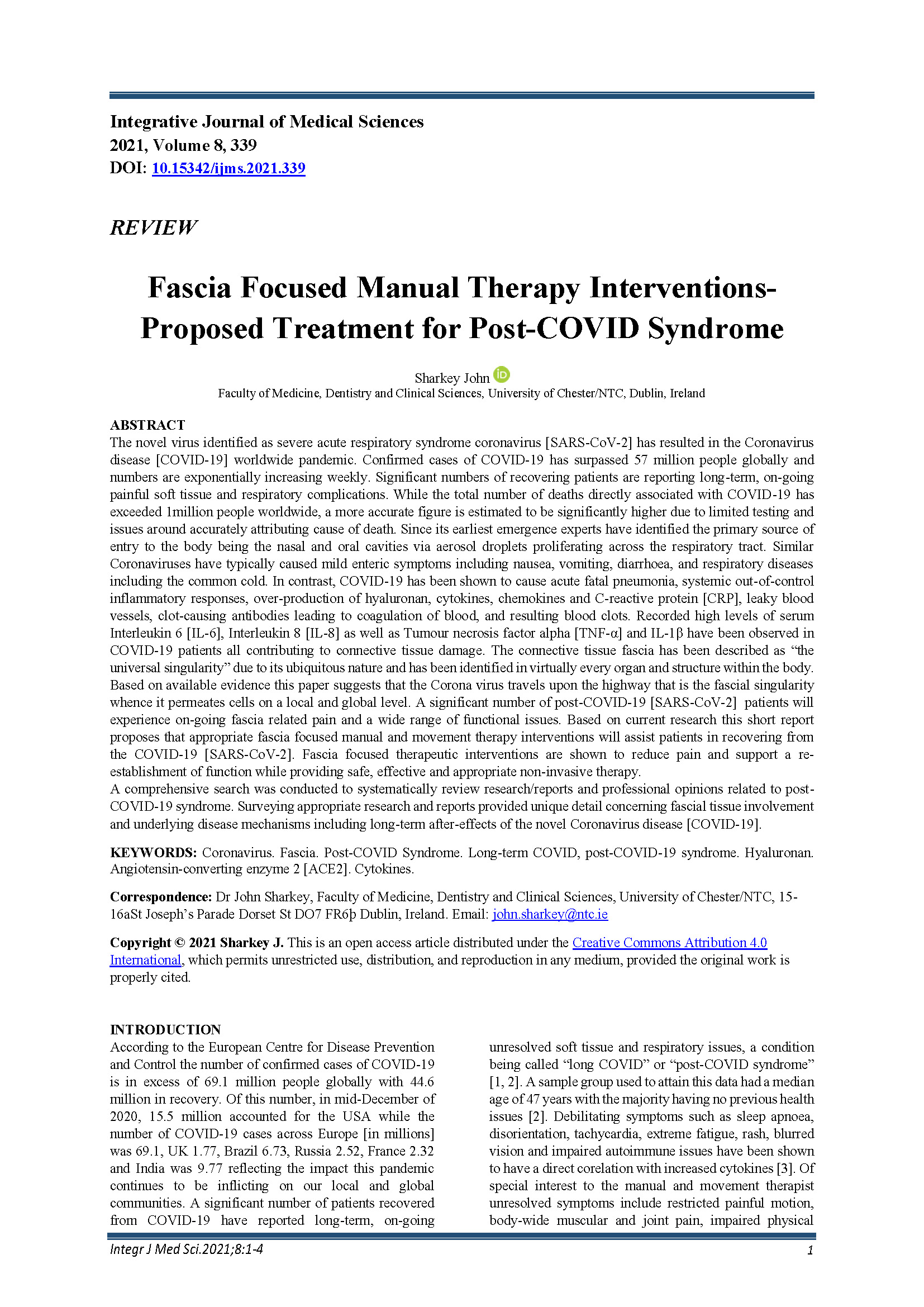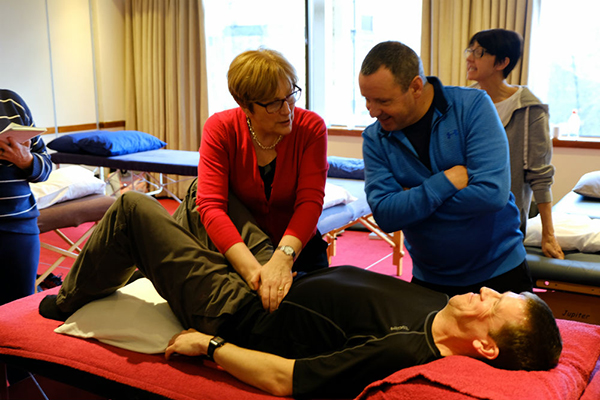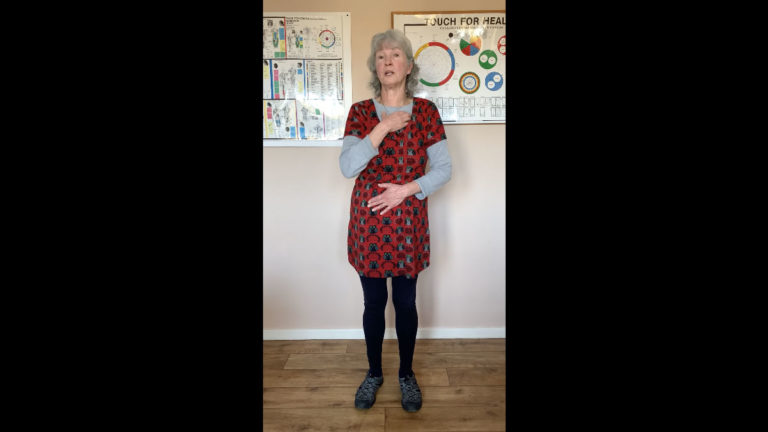ABSTRACT The novel virus identified as severe acute respiratory syndrome coronavirus [SARS-CoV-2] has resulted in the Coronavirus disease [COVID-19] worldwide pandemic. Confirmed cases of COVID-19 has surpassed 57 million people globally and numbers are exponentially increasing weekly. Significant numbers of recovering patients are reporting long-term, on-going painful soft tissue and respiratory complications. While the total number of deaths directly associated with COVID-19 has exceeded 1million people worldwide, a more accurate figure is estimated to be significantly higher due to limited testing and issues around accurately attributing cause of death. Since its earliest emergence experts have identified the primary source of entry to the body being the nasal and oral cavities via aerosol droplets proliferating across the respiratory tract. Similar Coronaviruses have typically caused mild enteric symptoms including nausea, vomiting, diarrhoea, and respiratory diseases including the common cold. In contrast, COVID-19 has been shown to cause acute fatal pneumonia, systemic out-of-control inflammatory responses, over-production of hyaluronan, cytokines, chemokines and C-reactive protein [CRP], leaky blood vessels, clot-causing antibodies leading to coagulation of blood, and resulting blood clots. Recorded high levels of serum Interleukin 6 [IL-6], Interleukin 8 [IL-8] as well as Tumour necrosis factor alpha [TNF-α] and IL-1β have been observed in COVID-19 patients all contributing to connective tissue damage. The connective tissue fascia has been described as “the universal singularity” due to its ubiquitous nature and has been identified in virtually every organ and structure within the body. Based on available evidence this paper suggests that the Corona virus travels upon the highway that is the fascial singularity whence it permeates cells on a local and global level. A significant number of post-COVID-19 [SARS-CoV-2] patients will experience on-going fascia related pain and a wide range of functional issues. Based on current research this short report proposes that appropriate fascia focused manual and movement therapy interventions will assist patients in recovering from the COVID-19 [SARS-CoV-2]. Fascia focused therapeutic interventions are shown to reduce pain and support a re-establishment of function while providing safe, effective and appropriate non-invasive therapy.
A comprehensive search was conducted to systematically review research/reports and professional opinions related to post-COVID-19 syndrome. Surveying appropriate research and reports provided unique detail concerning fascial tissue involvement and underlying disease mechanisms including long-term after-effects of the novel Coronavirus disease [COVID-19].
KEYWORDS: Coronavirus. Fascia. Post-COVID Syndrome. Long-term COVID, post-COVID-19 syndrome. Hyaluronan. Angiotensin-converting enzyme 2 [ACE2]. Cytokines.
Correspondence: Dr John Sharkey, Faculty of Medicine, Dentistry and Clinical Sciences, University of Chester/NTC, 15-16aSt Joseph’s Parade Dorset St DO7 FR6þ Dublin, Ireland. Email: john.sharkey@ntc.ie
Copyright © 2021 Sharkey J. This is an open access article distributed under the Creative Commons Attribution 4.0 International, which permits unrestricted use, distribution, and reproduction in any medium, provided the original work is properly cited.
Not joined up yet?
There’s plenty of reasons to join the LCSP Register
Insurance Partners
Our dedicated team can tailor individual policies to suit your specific needs
Workshops
Keep your skills up to date with CPD Workshops and courses
Business Support
Advice tailored to working in the private sector
Find a Therapist
Our directory of therapists searchable by the general public
Welfare Officer
Supporting members who may have situations of difficulty where they need assistance, guidance or reassurance.







